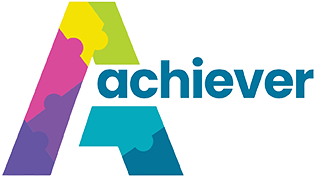Babysitting a child with autism requires an extra level of attention, understanding, and proactive measures to ensure their safety. As a babysitter, it's crucial to create a safe and supportive environment that caters to the unique needs of the child. In this blog, we will provide essential tips and strategies to help you keep a child with autism safe during your babysitting sessions.
1. Understand the Child's Needs:
Before babysitting, gather information about the child's specific needs, routines, and any triggers they may have. Talk to the child's parents or caregivers to gain insights into their sensory sensitivities, communication style, and behavioral patterns. Understanding their needs will help you anticipate and address potential safety concerns.
2. Create a Safe Physical Environment:
Ensure that the physical space where you'll be babysitting is safe and free from potential hazards. Remove sharp objects, secure cabinets with locks if necessary, cover electrical outlets, and block off access to dangerous areas. Childproof the space as much as possible, paying attention to any specific risks associated with the child's behaviors or sensory sensitivities.
3. Maintain Consistent Routines:
Children with autism often thrive on predictable routines. Try to maintain the child's usual schedule and familiarize yourself with their daily routines, such as meal times, nap times, and activities. Consistency helps reduce anxiety and provides a sense of security, promoting a safer and more comfortable environment.
4. Establish Clear Communication:
Effective communication is crucial when babysitting a child with autism. Familiarize yourself with the child's preferred communication methods, whether it's verbal, non-verbal, or through assistive devices. Use simple and concise language, visual aids, and gestures to facilitate understanding and ensure clear communication about safety rules and expectations.
5. Use Visual Supports:
Visual supports, such as visual schedules, social stories, or visual cues, can be powerful tools for children with autism. Create a visual schedule that outlines the day's activities and transitions, helping the child understand what to expect and reducing anxiety. Use visual cues to indicate safety rules, emergency procedures, or reminders for specific behaviors.
6. Engage in Sensory-Friendly Activities:
Engage the child in sensory-friendly activities that promote their well-being and minimize sensory overload. Provide access to calming activities, such as quiet reading, sensory bins, or soft music. Observe the child's reactions and adjust the environment or activities accordingly to prevent sensory overwhelm and ensure their safety.
7. Practice Positive Reinforcement:
Positive reinforcement is a valuable strategy when babysitting a child with autism. Praise and reward appropriate behaviors to encourage their cooperation and reinforce safety rules. Use a system of rewards, such as stickers or tokens, to acknowledge their efforts and motivate positive behavior.
8. Be Prepared for Emergencies:
Familiarize yourself with emergency protocols and contact information for the child's parents or guardians, as well as any relevant medical professionals. Keep a list of important phone numbers readily available. Prepare for potential meltdowns or sensory overload situations by having calming strategies or sensory tools on hand.
Conclusion:
Babysitting a child with autism requires attentiveness, understanding, and a proactive approach to safety. By gaining insights into the child's needs, creating a safe environment, establishing clear communication, and implementing visual supports, you can provide a secure and nurturing babysitting experience. Remember to engage in sensory-friendly activities, practice positive reinforcement, and be prepared for emergencies. By prioritizing the child's well-being and employing these strategies, you can ensure a safe and positive babysitting experience for both the child and yourself.


